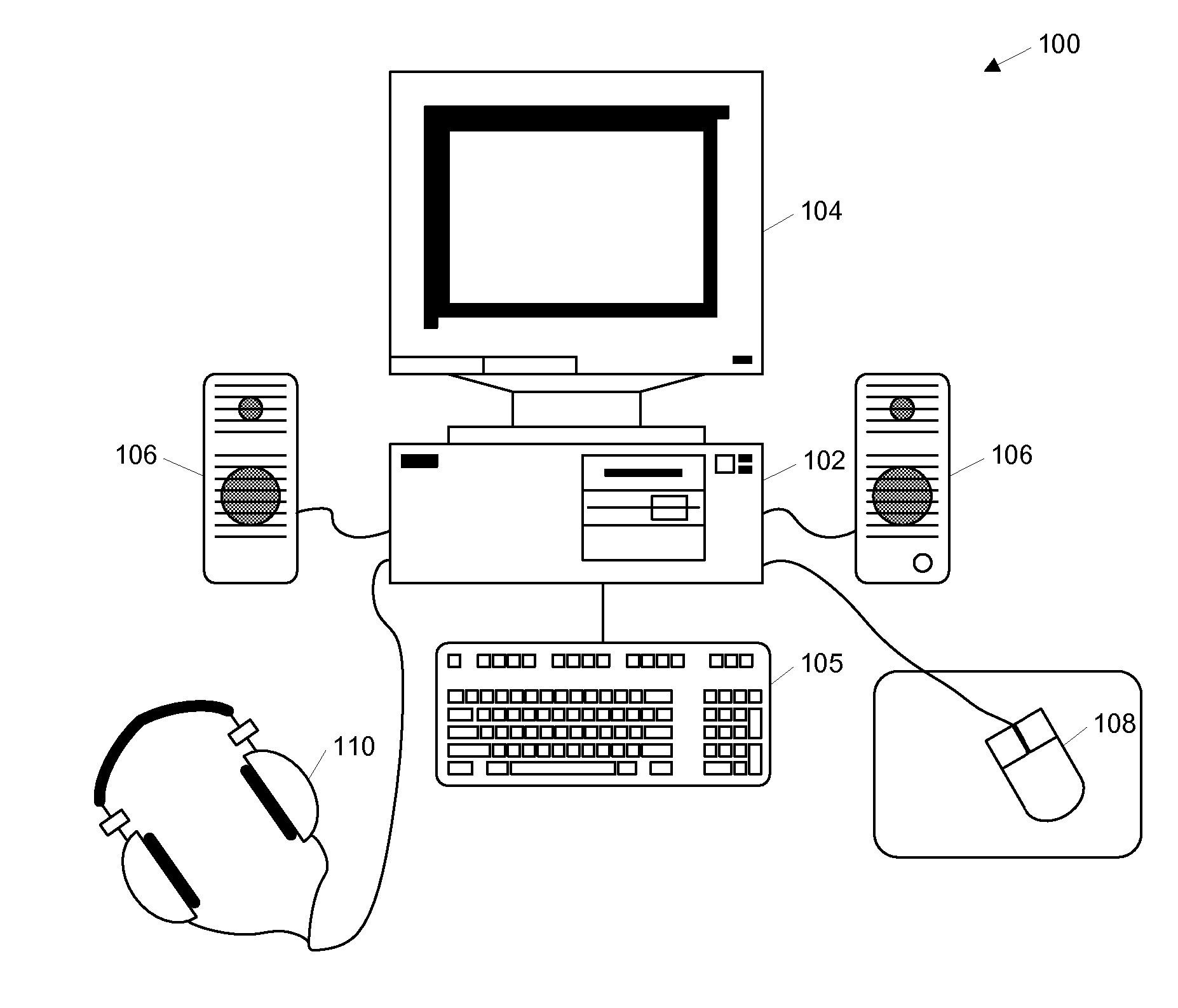Method for modulating listener attention toward synthetic formant transition cues in speech stimuli for training
a technology of speech stimuli and listener attention, applied in the field of brain health programs, can solve the problems of affecting the quality of life of people, and affecting the effect of available therapeutic approaches, so as to improve the “noisy” sensory representation, improve the representational fidelity and processing speed, and shorten the time constant
- Summary
- Abstract
- Description
- Claims
- Application Information
AI Technical Summary
Benefits of technology
Problems solved by technology
Method used
Image
Examples
Embodiment Construction
[0063] Referring to FIG. 1, a computer system 100 is shown for executing a computer program to train, or retrain an individual according to the present invention to enhance their memory and improve their cognition. The computer system 100 contains a computer 102, having a CPU, memory, hard disk and CD ROM drive (not shown), attached to a monitor 104. The monitor 104 provides visual prompting and feedback to the subject during execution of the computer program. Attached to the computer 102 are a keyboard 105, speakers 106, a mouse 108, and headphones 110. The speakers 106 and the headphones 110 provide auditory prompting and feedback to the subject during execution of the computer program. The mouse 108 allows the subject to navigate through the computer program, and to select particular responses after visual or auditory prompting by the computer program. The keyboard 105 allows an instructor to enter alpha numeric information about the subject into the computer 102. Although a numb...
PUM
 Login to View More
Login to View More Abstract
Description
Claims
Application Information
 Login to View More
Login to View More - R&D
- Intellectual Property
- Life Sciences
- Materials
- Tech Scout
- Unparalleled Data Quality
- Higher Quality Content
- 60% Fewer Hallucinations
Browse by: Latest US Patents, China's latest patents, Technical Efficacy Thesaurus, Application Domain, Technology Topic, Popular Technical Reports.
© 2025 PatSnap. All rights reserved.Legal|Privacy policy|Modern Slavery Act Transparency Statement|Sitemap|About US| Contact US: help@patsnap.com



